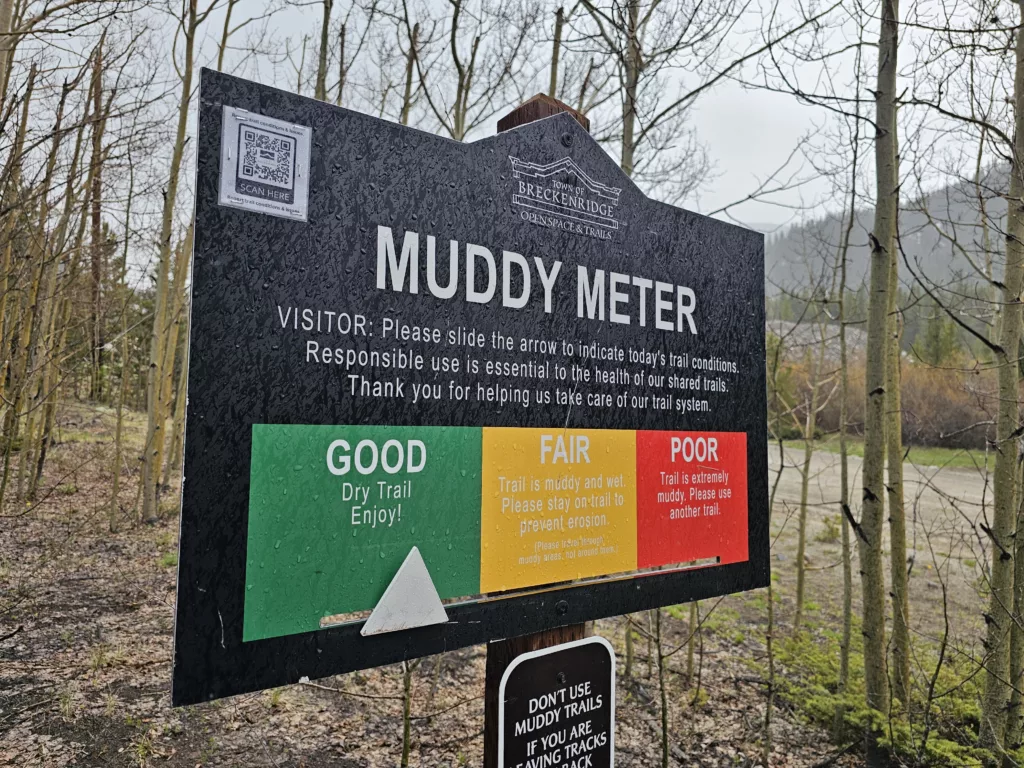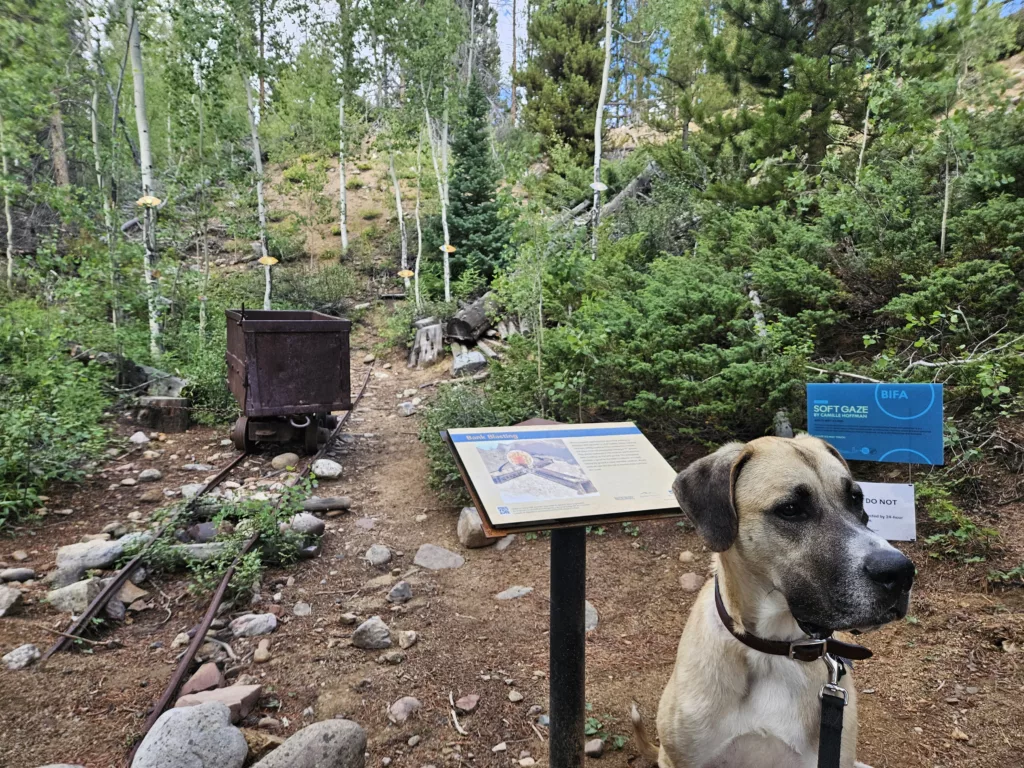Historical Hikes
About this series

Breckenridge History volunteer Preston Cooper will be highlighting Historical Hikes all summer long. These hikes wind through the past with views of mining artifacts and remnants along the way. Before you head out on the trail, be sure to check Preston’s Tips to make sure you are prepared for hiking in the high country!
Each hike features a map on the Hike Details page. Click on the box in the top bar of the map or on any of the markers to see key points, information, and additional photos of the hike.
About Preston
Who am I? My name is Preston and I just turned 60. I grew up in New Mexico and was assigned to Colorado Springs in 1988 while a satellite operations officer with the US Air Force. I have been spending time in Breckenridge ever since. I started volunteering with Breckenridge History in 2020 and have tried learning as much as possible about mining history and technology ever since. Since 2020 I’ve hiked about 1,000 miles on area trails.
B&B to Reiling Dredge
Enjoy this hike through the Golden Horseshoe. Distance: 1.2 miles to Reiling Dredge, 3/4-mile back along road or 1.7-mile return via Minnie Mine.
Iowa Hill mining area
Enjoy this hike through the Iowa Hill hydraulic mining area. Distance: 1.2 miles. Difficulty: moderate.
Gold Run Loop
Enjoy this loop through the Gold Run area. Distance: 3 miles. Difficulty: moderate.
Sallie Barber Hike
Enjoy this hike to the Sallie Barber Mine site. Distance: 3 miles Difficulty: Moderate
Aspen Alley
Aspen Alley is a 1.5-mile, easy-to-moderate hike with options to extend to 8 miles over 4-5 hours.
Wellington Ore Bin
Choose from several different hikes of varying lengths and difficulties.
Wirepatch Mine Hike
Enjoy this hike to the Sallie Barber Mine site. Distance: 3 miles Difficulty: Moderate
Preston’s Tips
- Remember that Summit County hiking will generally range from 9,000 to 13,000 feet in elevation. This means less oxygen and more UV, so hydration, pacing, and sun protection are important considerations if you’re not used to hiking at altitude.
 The Spring Season in the mountains is known as Mud Season because all the snow is melting and we get into the beginning of our annual monsoon season. Hiking or biking on mud is particularly damaging to the trails. Particularly with bikes, the long channels left in the trail provide a path for water to run off which then erodes the trail. Muddy Meters at many trailheads allow users to communicate trail conditions in person.
The Spring Season in the mountains is known as Mud Season because all the snow is melting and we get into the beginning of our annual monsoon season. Hiking or biking on mud is particularly damaging to the trails. Particularly with bikes, the long channels left in the trail provide a path for water to run off which then erodes the trail. Muddy Meters at many trailheads allow users to communicate trail conditions in person.-
- Trail conditions can also be reported online.
- Be prepared for changing weather. Your best bet is to hike early in the day. My first planned outing on Memorial Day was grounded when I got ready and then noticed that the weather had gone from sunny to snowing. When I did do that first hike, I started with sunny & 60, ending 2 hours later in rain & 40 weather. Bring a rain jacket during monsoon season. A broad brimmed hat can also help protect from sun and make a rainy hike more comfortable.
- What to bring? You can’t go wrong with the 10 Essentials for Hiking, many of which I’ve listed below. Most hikes will be close to town and have nearly 100% cell coverage, but being prepared to thrive under adverse conditions helps give some of that feeling of rugged independence.
- Bug Spray – we don’t normally have bugs here, but if hiking in the late afternoon near a stream, ditch, pond, etc. they can make their presence known. Having a little bug spray is nice for those times.
- Bear Spray – we also don’t have many issues with bears or other wildlife, but they are here and a little extra protection is nice for peace of mind.
- Water – I already mentioned water and will mention it again. I regularly hike with a water pack having a 3 liter bladder and come back with it empty if sharing with family or hiking from 10,000 feet up over 12,000′.
- Trail Map – having a trail map on your phone is a fabulous way to see where you are and where you’ve been, but batteries can die and phones can break. Having a paper copy of a trail map (and a compass) can be handy. A folding version (printed on plastic) of this trail map can be purchased at the Welcome Center and has been in my pack guiding my hikes for years. Sometimes I just pick a mining symbol and go to see what’s there!
- Flashlight – from time-to-time my after-work hikes will run long and I’m getting back in the dark. Having a headlamp or flashlight (separate from your phone) has been a lifesaver in these events.
- Food – whether you’re trying to quiet whining kids or just need a bit more energy, having a bit of food sure helps. Just pack out your trash!
- 1 or 2 trekking poles – 3 points of contact is a good rule of thumb when climbing or descending. Even when hiking on flat rocky trails, I’ll use a trekking pole for extra stability when tripping over a rock or root.
- First aid kit – and finally, a small first aid kit can also help in a pinch. I also carry a large Ace bandage just in case of a turned ankle on our rocky trails.
- Sunscreen – remember that you’ll be hiking 2 miles closer to the sun which means there’s 2 miles less atmosphere to attenuate the sunlight, so burning is a real risk and sunscreen or sleeves & pants are necessary.
 Keep kids close and dogs on leash: as mentioned above, we don’t often have problems with wildlife, but nobody wants their dog stomped by an angry moose or killed by a mountain lion. I’ve never seen a bear or lion while out hiking, but they are here and will probably see you.
Keep kids close and dogs on leash: as mentioned above, we don’t often have problems with wildlife, but nobody wants their dog stomped by an angry moose or killed by a mountain lion. I’ve never seen a bear or lion while out hiking, but they are here and will probably see you.- Also, please pack out your dog’s waste. I have seen instances where people remembered bring and use dog waste bags (available at some trailheads) but then did an epic fail by leaving their full bag on the side of the trail. There is NO nightly crew walking the trails and picking up dog poop bags!
- When you do see wildlife, keep your distance and make SURE you’re not in between a mom and her offspring.
- Hiking App for your smartphone – these are great for keeping you on track and recording your adventure. My favorite one is the free Colorado Trail Explorer or COTREX. The hiking trails in the system are managed by local organizations so are kept reasonably current and the basemaps for areas where you’re planning to hike can be downloaded so you’re not blinded in areas with no cell coverage.
- Stay off talus slopes! You’ll be in good shape if you stay on trail, but I have found myself scrambling to look for mining claim markers on these steep rocky slopes and they are dangerous. Not only can you get bloodied, but if the rocks are big enough you can get seriously injured. Or dead.
- Finally, hiking with a buddy to share your day with is good for the soul. And letting somebody know where you’re going (and when you plan to be back) are both good safety precautions.
Preston


